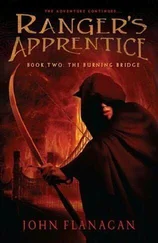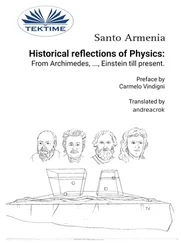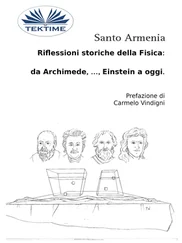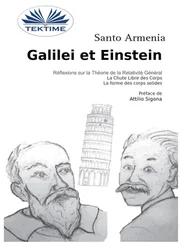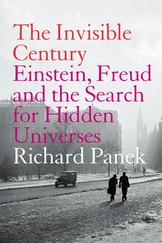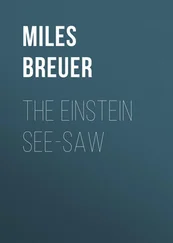“You say ‘you,’ not ‘we,’” said George. “Aren’t you coming with us?”
“I cannot,” said Iris. “This body is a temporary thing, and its processes were regulated through the Bridgehead that I carried. That link is now broken, and I am dying. It is well. I would not be able to bear this isolation if I could not see its end approaching. If you stand close to the Bridgehead, within about five meters, you should be projected through the time-hole. I will go and press the red button that starts the process.” She turned and walked toward the fence gate.
“But,” Roger objected, “we’re a hundred meters underground. If we arrive at a time where there’s no SSC tunnel down here, we’ll be trapped in solid limestone.”
Iris stopped. “The other Bridgehead will not be located here,” she said. “I suggested to our engineers that the Bridgehead in the past should be located at the site where you hatched my Egg. We have good coordinates for that location. You will be deposited above the water there and will have to swim to shore.”
“I’m not a great swimmer,” said, Roger, “and the water will ruin my computer. Let me make, a float.” He raced across the room grabbed a large plastic garbage, b.ag from a workbench, and returned to the enclosure. He removed his “backpack, nlaced it in the bag, and knotted the end, trapping considerable air inside. He held this to his chest.
“Then prepare yourselves,” said Iris. She walked to the gate, then paused by the door. “I hear something outside.” She moved closer to the closed door and stood listening. “Hive creatures,” she said.
As Roger watched, the door seemed to melt. Behind it was a gray fog. Hive Flyers and a myriad of other creatures began to fly or crawl into the room. “I cannot destroy them, but perhaps I can delay them,” Iris said. “I am sorry, but one of you will have to press the red button.” The child stood before them, her palms extended forward. Hive creatures touched her and dropped to the floor. Soon there was a large pile at her feet. Behind the open doorway large dark shapes were moving forward. Roger would remember those shapes in his nightmares. “You go on, George,” he said. “I’ll stay and press the button.”
George grabbed Roger’s shoulder and stopped him. Then he picked up the long metal shorting pole that lay on the floor, fed it through the wire mesh of the caged-off area, and shoved its end against the red button.
There was a blinding blue-green flash, and the universe ended.
February 3, 1987 August 15, 1992
I doubt if there is a member of the Senate who really understands to any degree what the SSC is all about… Everything from the computer to television has come as a result of high-energy physics undertaken in this country. Between 20 percent and 30 percent of the gross national product of the United States comes from high-energy physics.
— SENATOR PHIL GRAMM (R.-TEXAS)
[The SSC] will revolutionize the computer industry, the medical community, and transform our industrial and technological base. Economic opportunities never anticipated will arise, scientific advancements never predicted will proceed, and educational worlds never explored will emerge. Even if the original scientific goals are not completely met, the knowledge gained will completely change our lives.
— SENATOR DAVID BOREN (D.-OKLAHOMA)
The only thing colliding in the land under Texas will be taxpayer dollars.
— CONGRESSMAN DENNIS ECKART (D.-OMO)
February 15,1993
[There is] no reason why we have to find the Higgs boson by the turn of the century.
— DR. JOHN H. GIBBONS, CLINTON PRESIDENTIAL SCIENCE ADVISOR, JUSTIFYING CLINTON’S STRETCHOUT AND COST BOOST OF THE SSC PROJECT.
October 13, 1993
We’re going to whip their ass.
— CONGRESSMAN SHERWOOD BOEHLERT (R.-NEW YORK) COMMENTING ON HIS PLANNED FLOOR FIGHT IN THE HOUSE TO KILL THE SSC PROJECT.
ROGER FELL INTO DARKNESS, EMBRACING HIS PLASTIC-wrapped backpack as he fell. As his back hit the water, there was a tremendous splash beside him. Some of the concrete floor must have come along with them, he thought. A great wave of water washed over him, thrusting him sideways, sucking him deep.
The Gulf water felt bathtub-warm and tasted salty. His head and back hit the sandy bottom hard, but he was able to right himself and push upward toward the surface. When his head broke the water’s surface, he was pleased to find that his plastic-wrapped pack had enough buoyancy to support him. He coughed, then shouted hoarsely for George. There was no answer.
Roger looked around. Moonlight sparkled on the water and lights of the shoreline were visible in the distance. He attempted to stand, extended his feet downward, but the water was too deep, and his head went under. Sneezing water, he removed his water-heavy shoes and socks, shoved the socks in his jeans pockets, tied the shoelaces together, and hung his shoes around his neck. Then, embracing the pack, he began to kick in the direction of the shore. After about ten minutes of kicking, he tested the depth again. This time he could stand on the bottom. He dragged his legs through the water toward the shore. A large wave broke over him, knocking him down, but he righted himself and continued.
Finally Roger staggered out of the water and sat down on an inverted plastic bucket that someone had left on the beach. A full moon was overhead, and the moonlight gleamed across the water. He undressed, wrung the salty water from his clothes, and put them back on. He was a bit cold, but it was not too bad because the air was fairly warm. “George!” he called again. “Where are you?”
To his left he heard a call in the distance. In the moonlight he could see George walking toward him down the beach.
“Well, I see you managed to stay afloat, Roger,” George said. “I’m glad the Makers didn’t place their Bridgehead any higher. I hit the water pretty hard.”
“As did I,” said Roger, removing the plastic cover and shouldering his backpack. “Time travel, so far, has been an unpleasant soggy business.”
The stilt house they had rented seventeen years in the future was not there. In its place was only a weedy lot bearing a BEACHFRONT PROPERTY FOR SALE sign. Roger found 3 yellowed newspaper in the tall weeds. He was able to read it fairly well in the bright moonlight. The masthead said HOUSTON CHRONICLE, FRIDAY, JANUARY 30, 1987. He laughed aloud, for a small article in the lower left-hand corner of the front page bore the headline REAGAN ANNOUNCES SUPER COLLIDER. He could barely make out the text. It said the machine would cost $4.4 billion and be completed in 1996. He showed it to George.
“Ah yes,” said George, “it all comes back. Reagan’s Department of Energy got the project started with an amazingly low cost estimate that left out inflation and the cost of the detectors. The damn thing actually cost eight billion dollars and wasn’t up and running until 2003. Congress was rather unpleasant about that.”
They walked eastward on the beach toward the lights of Galveston and came to an impromptu picnic table made from a battered sheet of sun-bleached plywood.
“Wait a bit,” said Roger. “I think we should stop here and do an inventory. I suggest we put all our possessions on this table and see what we’ve brought with us.”
It was an interesting collection. There were two Bridge detectors, useless as detectors but fully functional as cutting lasers. George’s Swiss Army knife with the toothpick missing showed dark red in the moonlight. Two key rings held keys that would not fit any existing locks, and George’s had a car door lock remote control that would not be manufactured for another ten years. The eight credit cards and chip cards all had issue and expiration dates in the twenty-first century. There was $423 in U.S. currency, all signed by a Treasury Secretary who had not yet been appointed and bearing series marks of printings starting with the year 2000. There were various coins, most with dates of issue later than 1987. Roger’s British passport had been issued in 2002 and his INS green card was dated 2004. George’s Washington State driver’s license with picture ID had an issue date of 2003 and an expiration date of 2008, sealed with a hologram. There were two personal cellphones that no longer functioned and two digital databank wristwatches that, on close inspection, were clear anachronisms. Roger’s backpack contained the most glaring anachronism of all, his personal high performance lapstation containing several terabytes of stored programs and holo-ROM books and data that included the level-one download from the Makers.
Читать дальше



